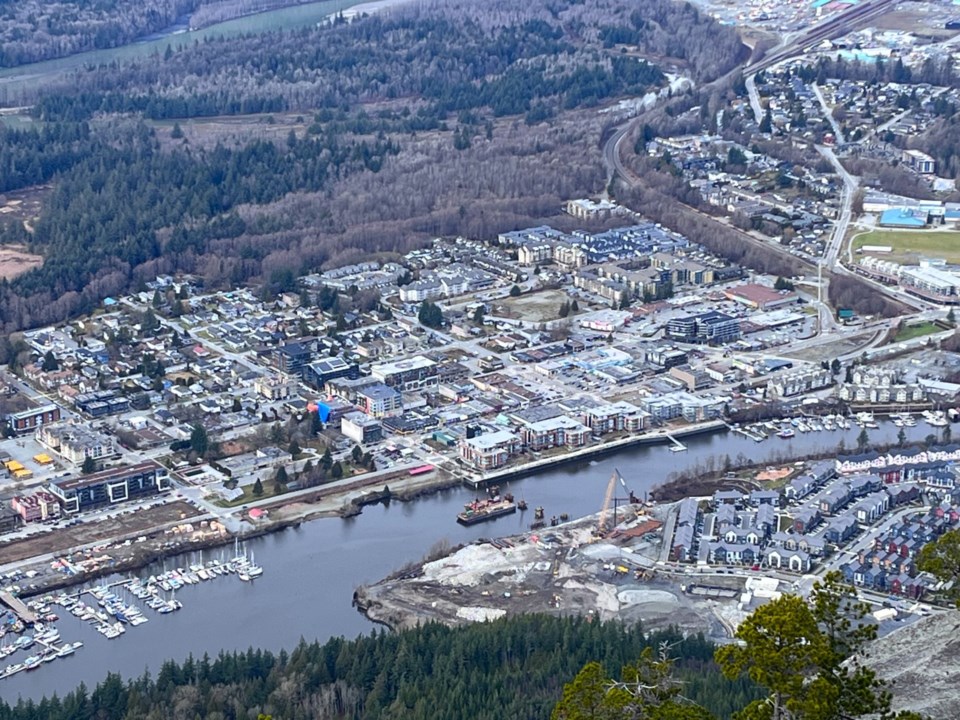The District of Squamish is quickly getting up to speed on provincial housing changes and ensuring it completes initiatives related to the housing accelerator funding.
At the Feb. 27 committee of the whole meeting, Squamish council members unanimously endorsed the Squamish Housing Action Plan Overview (SHAPO), directed staff to move ahead in potentially expanding the development cost charges (DCC) bylaw and OK’d the development of a new amenity cost charges (ACC) bylaw.
The SHAPO listed many housing-related undertakings the District needs to do to satisfy conditions from the housing accelerator fund—and thereby receive the full amount of federal funding, which is $7 million over four years—plus action to meet recent provincial requirements.
“As we approach these decisions,” said Mayor Armand Hurford in expressing his support, “it’s really important that we communicate the problem that we’re trying to solve … and where our discretion is or isn’t.”
Beyond the tenure of current council
Though some of the steps to get the funding or meet provincial requirements have already been initiated or completed, some of the steps have deadlines near the end of 2026, which goes beyond the term of the current council. One of the most immediate steps coming up in 2024 includes updating single-family zoning to permit four units on all residential lots (RS-1 and RS-2 zones).
Other major steps include completing a housing needs report estimating the next 20 years, plus amending the Official Community Plan and pre-zoning land to address those needs.
Additionally, with council’s approval, staff will look to increase the scope of the DCC bylaw and develop an ACC bylaw.
“The DCC bylaw tool now includes funding for fire halls, police stations, as well as solid waste and recycling facilities,” said Jonas Velaniskis, the senior director of community development. “The new mechanism that allows municipalities to collect community amenities through the ACC bylaw … include but are not limited to: community, youth or senior centres, recreational and athletic facilities, libraries, child care facilities as well as public squares.”
Immense undertaking
Although all the undertakings are aimed at helping foster housing development in Squamish, the overall magnitude of the steps involved— that are provincial requirements and not unique to Squamish—was apparent.
“I had the pleasure of facilitating a panel at the UBCM Housing Summit and the president of the [Planning Institute of British Columbia] was part of it,” said Coun. Jenna Stoner. “And, in her words, we don't have enough planners to do all this work. And all of the municipalities in the province are now trying to get the same planners to the same amount of work.”
Stoner commented that finding ways to co-ordinate with other municipalities may have benefits. Several other councillors agreed.
50,000 people could 'conceivably fit'
Senior planner Matt Gunn told council that although the District has not completed a parcel-by-parcel analysis of space for a growing population, they have completed broad estimates.
“We’re at around 25,000. And, when we do that analysis, it looks like 50,000 people could conceivably fit within the existing growth management boundary and a slight expansion to include a parcel that’s been talked about previously,” he said.
Coun. Eric Andersen later commented that amenities and economic development must grow with that estimation, and the District must be prepared for “legitimate questions” from the public about the function and community of Squamish.
“When people will hear the comment that we can fit 50,000 people within our current growth management boundaries, we must … respect that we’re going to hear concerns,” he said. “We do not have community-wide plans for amenities or for economic development, and we need those alongside.”





